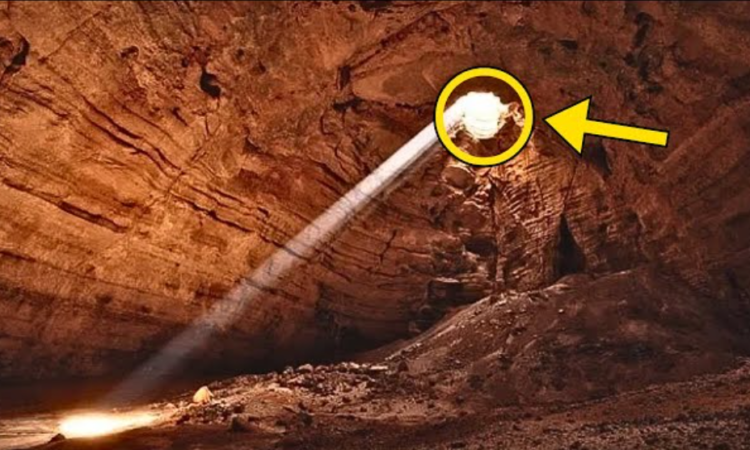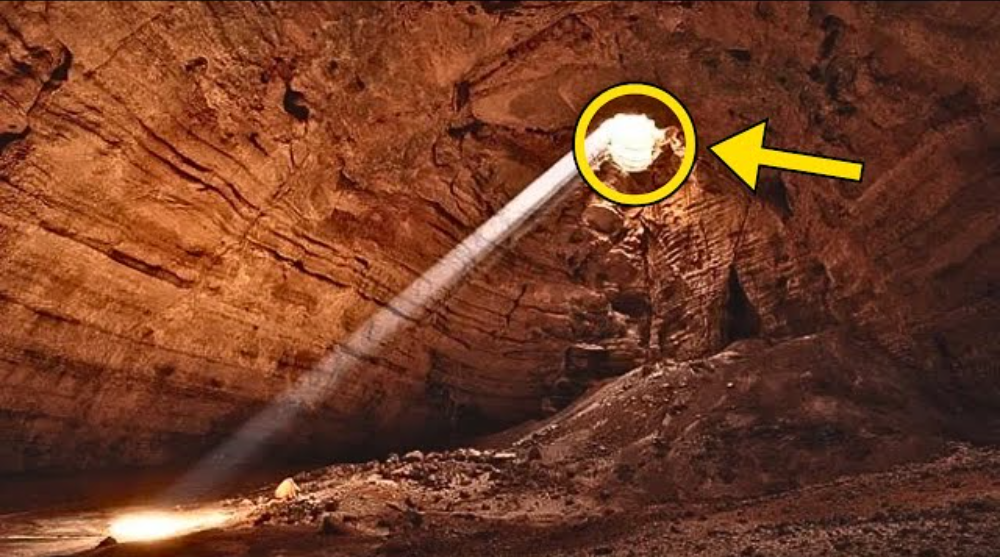Farmer Accidentally Discovered The World’s Biggest Cave – What Happened Next Shocked The Whole World

Ho’s venture into the forest was driven by a desire to find agarwood, a highly valuable timber known for its use in crafting medicines, perfumes, incense, and various other items. As a farmer, Ho understood the potential financial gain agarwood could bring. This quest had taken him deep into the forest numerous times, navigating the dense vegetation in search of this rare wood.

However, his latest expedition was abruptly interrupted by a sudden storm, forcing him to abandon his search prematurely. As the storm intensified, Ho’s immediate concern shifted to finding shelter. He hurried through the forest, seeking refuge from the pouring rain.
Eventually, his search brought him to the base of a limestone cliff. But as he neared the entrance, he made a startling observation – a strange mist was emanating from within, adding an air of mystery and intrigue to the cave-like opening.
The peculiarities of the cave didn’t end with the mist. Ho was soon drawn to a distinct sound emanating from deep within the cavern – the unmistakable roar of a river. Instead of seeking shelter there, he decided it was safer to leave the area and the mysterious cavern behind.
After returning home from the forest, Ho didn’t dwell much on his encounter with the cave. However, a chance meeting with Deb and Howard Limbert, part of the British Vietnam caving expedition team, changed that. The couple was in Fong Na conducting research on local caverns when Ho shared his experience of finding the cave with the Limberts. Little did he know how pivotal this conversation would become.
The Limberts were immediately captivated by Ho’s story. Ho’s casual mention of clouds and the sound of a river inside a limestone cave struck a chord with the couple. Yet, there was a significant hurdle in their path – Ho couldn’t remember the exact location of this potentially monumental discovery. Eager to rediscover the cave, Ho agreed to assist the Limberts in their quest. This marked the beginning of a journey that would eventually lead to an extraordinary discovery.
The vastness of the forest and the ambiguity of the cave’s location made the search incredibly challenging. For years, Ho persisted in this quest, driven by the memory of his accidental discovery and the hope of finding it once again. Eighteen years after Ho’s first encounter with the cave in Fong Kbang National Park, amidst the foliage, he recognized a landmark that brought the memory of the cave rushing back.
Overwhelmed by the significance of his find, Ho was determined not to lose the cave’s location again. He carefully noted every detail of the route and surrounding landmarks to ensure he could find his way back. Once he returned home, Ho attempted to contact the Limberts, who had since left the area. Fortunately, he was able to get in touch with their team, setting in motion a series of events that would bring the cave to the world’s attention.
In April 2009, Howard Limbert and his team, in collaboration with the Geography Department of Hanoi University of Science, embarked on an expedition to explore the cave. The team’s first venture into the limestone fissure was filled with anticipation and excitement. As they delved deeper into the cave, the team was unprepared for the scale and significance of what they were about to uncover.
By the end of that week, the Limberts and their team had gathered groundbreaking data and even christened the cave with a name. During their initial exploration of Son Doong Cave, the team encountered a massive barrier in the form of a gigantic flowstone rock. Despite this hurdle, Limbert was convinced they had stumbled upon the largest natural limestone cave in the world. This moment marked not an end but the beginning of a series of groundbreaking discoveries about Son Doong.
Meanwhile, Ho and the team were contemplating a suitable name for their monumental find. After some deliberation, they decided on Son Doong, a name that would soon become synonymous with one of the greatest natural wonders of the world. Yet, the cave’s full exploration was still incomplete due to the barrier posed by the flowstone.
Almost a year later, Limbert and his team returned to Son Doong, equipped this time with the tools necessary to conquer the Great Wall of Vietnam, the nickname they had given to the massive flowstone. After a challenging ascent, they successfully scaled the wall, revealing that the end of the cave was a mere 400 meters beyond this point.
With the cave fully explored, its astounding dimensions were finally confirmed. These staggering statistics placed Son Doong firmly on the map as an unparalleled natural wonder. Son Doong’s record-breaking size was first confirmed by National Geographic TV, and in 2013, its status as the world’s largest cave was officially recognized by the Guinness Book of World Records.
In 2019, Howard Limbert reached out to a trio of British divers. He invited them to explore the underwater systems within Son Doong, a venture that promised to shed light on uncharted aspects of the cave. Accepting this challenge meant these divers would be the first to delve into Son Doong’s submerged pathways.
As the trio navigated the underwater realms of Son Doong, they came across a previously unnoticed passage. One of the most thrilling outcomes of the dive was the confirmation of a connection between Son Doong and another massive cave, Hang Thong. The sheer scale of Son Doong defied imagination, making it not just the largest cave but a landmark of geological significance.
Crossing the river in Son Doong cave leads to one of its most remarkable caverns, housing an enormous stalagmite and offering enough space for a Boeing 747 to pass through comfortably. The stalagmite within this cavern is particularly notable; it has been whimsically named the Hand of Dog. This natural formation, resembling a giant hand, is just one of the many wonders that make Son Doong a unique and fascinating place to explore.
Leaving the Hand of Dog behind, the journey through Son Doong continues into a breathtaking section filled with natural light. This illumination comes from a giant opening in the cave ceiling, allowing sunlight to penetrate and foster the growth of lush vegetation.
Howard Limbert shared fascinating insights about the cave’s ecosystem in a 2019 interview with Lonely Planet. He revealed that the cave is home to a diverse range of wildlife, including monkeys, snakes, squirrels, rats, flying foxes, birds, and bats. These animals have adapted to the cave’s unique environment, utilizing the internal jungle and its resources.
Beyond the Garden of Eden, the cave continues to captivate with its diverse landscapes. For those who dream of witnessing Son Doong’s wonders in person, the opportunity is within reach, albeit at a price. About four years after the first official expedition, Son Doong has been open to guided tours. Each spot on the tour costs around $3,000, and the experience spans four days. It’s a comprehensive exploration of one of the world’s most magnificent natural wonders, accompanied by a team of experienced professionals.
Each night of the tour, participants camp in comfortable tents, allowing them to fully immerse themselves in the cave’s extraordinary environment. Annually, only about 1,000 people have the privilege of experiencing the Son Doong tour, making it an exclusive adventure. The tours offer more than just a walk through a cave; they are
an exploration of stunning natural beauty, including jungles, mountains, cliffs, and an array of wildlife, making the scenery as spectacular as the cave itself.
The cave’s sheer size and beauty make it a once-in-a-lifetime destination for adventurers from around the world. The influx of visitors and the revenue generated from the tours have significantly boosted the local economy, improving the living conditions of residents in Fong Na.
As for Ho, the farmer who first stumbled upon the cave during a storm in 1990, his life has also changed for the better. Ho’s chance discovery during that fateful storm has not only led to the unveiling of one of the world’s greatest natural wonders but also improved his own livelihood, illustrating how a single event can have far-reaching consequences.




